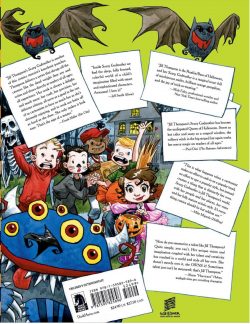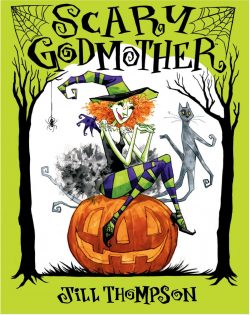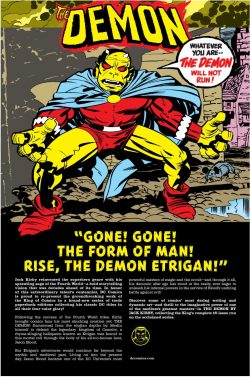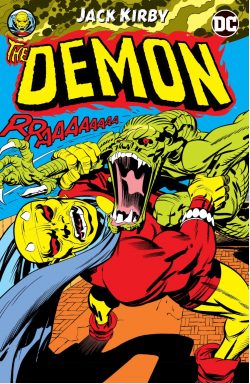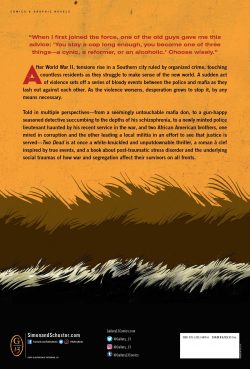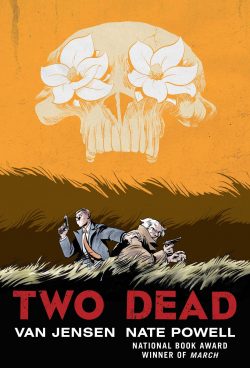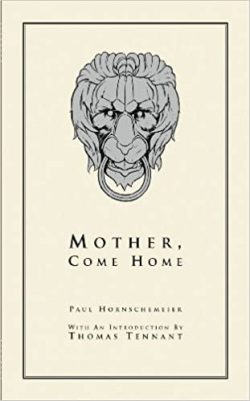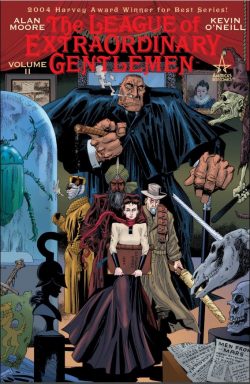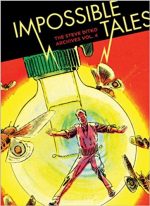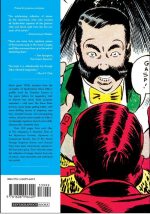

By Gilbert Hernandez (Fantagraphics Books)
ISBN: 978-1-60699-806-9 (TPB)
Please pay attention: this book contains stories and images of an extremely adult nature – specifically designed for consumption by mature readers – as well as coarse vulgar language most kids are fluent in by the age of ten.
If reading about such things offends you, please stop now and go away. Tomorrow I’ll do something with violence and explosions, so come back then.
In addition to being part of the ongoing graphic literary revolution that is Love and Rockets (where his astonishingly compulsive tales of Palomar gained vast critical acclaim), Gilbert Hernandez has produced stand-alone tales such as Sloth, Girl Crazy, Julio’s Day and Hypnotwist: all distinguished by his bold, simplified line artwork and sensitive use of the literary techniques of Magical Realist writers Carlos Fuentes and Gabriel GarcÃa Márquez: techniques which he has added to and made his own.
Love and Rockets – by Gilbert and brothers Jaime and Mario – was/is an anthology comics publication featuring sleek, intriguing, sci-fi-ish larks, heart-warming, gut-wrenching soap-opera fantasies, terrifying manic monster stories and experimental comic narratives that pretty much defy classification. To this day, the Hernandez boys continue to captivate with incredible stories sampling a thousand influences conceptual and actual – everything from Archie Comics and alternative music to German Expressionism and masked wrestlers.
Originally conceived for extended serial Heartbreak Soup, Palomar was a conceptual playground and cultural toybox; an impoverished Latin-American village with a vibrant, funny and fantastically quotidian cast. Everything from life, death, adultery, alien infiltration, magic making, hauntings, serial-killing and especially gossip happened in its meta-fictional environs as Gilbert plundered his own post-punk influences – comics, music, drugs, comics, strong women, gangs, sex, family and comics – in a style informed by everything from Tarzan strips to Saturday morning cartoons and The Lucy Show.
Beto – as he signs himself – returns to Palomar constantly, usually with tales involving formidable matriarch Luba, who ran the village’s bath house and cinema; acted as Mayor and sometimes law enforcer – as well as adding regularly and copiously to the general population. Her children, brought up with no acknowledged fathers in sight, are Maricela, Guadalupe, Doralis, Casimira, Socorro, Joselito and Conchita.
Luba is a character who defies easy description and I don’t actually want to: As one of the most complex women in literature, let alone comics, she’s somebody you need to experience, not learn of second-hand. You will certainly notice that she has absolutely enormous breasts. Deal with it. These stories are casually, graphically, sexually explicit, and appalling violence is also never far from the players lives…
Luba’s story is about Life, and sex and death happen, casually and often, usually to and with the wrong people at the wrong time. If harsh language and cartoon nudity (male and female) are an insurmountable problem for you, don’t read these tales; but it is genuinely your loss.
Throughout all those eventful years, normally always in the background and frequently sidelined, was Luba’s cousin Ofelia: confidante, babysitter, surrogate mum, family conscience and keen – if not especially detached – observer…
After a run of spectacular stories (all of which have been collected in a variety of formats and editions which I really must get around to reviewing in their entirety), the first incarnation of Love and Rockets ended. Luba and her extended family graduated to a succession of mini-series which focussed on her relocation to the USA to reunite with her half-sisters Rosalba (“Fritzâ€) and Petra Martinez. The tone and content ranged from surreal to sad to funny to thrilling. The entire world can be found in those pages.
Although in an ideal world you would read that aforementioned older material first, there’s absolutely no need to. Reminiscence and the force of memory are as much a part of this potent passion-play as family feeling, music, infidelity, survival, punk rock philosophy, and laughter – lots and lots of laughter.
Brilliantly illustrated, these are human tales as earthy any as any Chaucer’s Pilgrims could tell, as varied and appetising as any of Boccaccio’s Decameron and as universally human as the best of that bloke Shakespeare…
This particular monochrome family album – available in paperback and digital editions -compiles assorted material first seen in Luba #3-9; Luba’s Comics and Stories #2-5 and Measles #3 and sees so-often sidelined “sister†Ofelia notionally promoted to headliner. Following a pictorial reintroduction to ‘Luba’s Family’, the ever-unfolding saga resumes with ‘Remember Me’ as the youngest kids swap tales of the fathers they have never known.
‘Luba and the Little Ones’ finds the ferocious matron calming down her very excitable progeny, before ‘Socorro…’details that girl’s educational problems. Apparently, she is too smart and her teachers want her transferred to a special school…
‘The Book of Ofelia Part One’ sees Luba and her mute, maimed and possibly former gangster husband Khamo reeling from the news that their faithful major domo is considering writing a book based on her cousin’s drama-drenched life. With friction mounting, the frustrated author and perennial babysitter casts her mind back to Palomar, where she sacrificed her relationship with lover Rico (“call me Ooliâ€) to raise a wild toddler called Luba.
Back in the now, wise-beyond-her-years Casimira knows her quiet guardian is in contact with an old flame on the internet…
‘The Book of Ofelia Part Two’ expands on the theme as the prospective writer recalls years of fighting with her wilful, almost elemental charge, whilst pondering a too-long deferred decision…
‘Spot Marks the Ex’ then exposes more family scandals as entrepreneurial Pipo tries to get rid of her former husband Gatoand deal with the ongoing problems caused by Luba’s daughter Doralis.
Much to the sponsors’ horror the teen star of Pipo’s popular Spanish-language kid’s show plans to come out as a lesbian, someone at the studio is giving the newspapers salacious scandals for their holier-than-thou gossip pages and her beloved son Sergio Jimenez (a soccer superstar and celebrity bad boy) is having an affair with Fritz Martinez – the very woman Pipo cannot get out of her own libidinously supercharged mind…
Fritz is a terrifyingly complex creature: psychiatrist, therapist, B-Movie actress, belly dancer, amorous drunk, gun-fetishist, sexually aggressive and a manipulative serial spouse. Beautiful, enticingly emotionally damaged, her “high soft lisp†more likely an affectation than genuine speech impediment, she sashays from crisis to triumph and back again, and (almost) everybody who wants hers can apparently have her – except increasingly impatient Pipo…
Moreover, as strident accountant Boots signs on to save Pipo’s company, the stressed and busy businesswoman begins to suspect Sergio and his stepfather Gato have some strange connection and are up to no good…
‘El Show Super Duper Sensacional Fantastico de Doralis’ reveals the controversial gay star’s story of the irresistibly beguiling merfolk who live in secret amongst us, after which ‘Snail Trail’ introduces well-meaning young Hector who rescues Socorro and Joselito after they steal and crash a car.
He sees and is instantly enchanted by their Tia (that’s Aunt in Spanish, hombre) Fritz in ‘Bromear’ and in ‘Meeting Cute, Fucking Cuter’ falls hopelessly for the sexual predator: so much so, in fact, that he agrees to her request to date her quirky, buff, bodybuilding older sister Petra, thus leaving Fritz free for a sordid secret affair with toyboy acquaintance Sergio…
Sadly, whipped Hector finds he has more in common with Petra’s little daughter Venus. They both love the same comicbooks, movies and music and she doesn’t make him do things he’d rather not…
A garden party bids ‘Buen Viaje, Socorro’ and sees the smart girl’s last family fun before heading off to smart kid boarding school, after which ‘Luba One’ finds the downhearted mum dragged to a fetish party by Fritz and Pipo where she finds blonde sex god Fortunato: a man no woman can resist and a perfect lover who derives no joy from his conquests…
Boots, mindful of the merman legend, speculates on his origins in ‘The Fortunato Files’ after which ‘The Goddess and the Goof’ finds Hector finally capitulating to pressure and taking gloriously gorgeous, Amazonian Petra out only to discover she is every inch as bewitching and satisfying as her sister. Conflicted by a surfeit of physical riches he ponders a big decision…
After a little dance madness in ‘El Biale’, Venus and Doralis share a moment with one of the fallen star’s fans in ‘The Glamorous Life’ whilst ‘Boots Takes the Case’ has the tenacious little accountant assume a larger role. With Gato exposed as the source of the leaks and sorrowfully reaping his reward in ‘And So…’, Boots proceeds to pry out more secrets in ‘Kisses for Pipo’; appraising key moments since the entrepreneur entered America as a teen, disclosing her past interactions with Sergio, Gato (and his current wife Guadalupe), Fortunato and Pipo’s latest fling Igor…
‘In Bed with Pipo’ targets her bizarrely twisted relationship with gun-obsessed Fritz, the men they occasionally share and a terrifying past experience when both were stranded in a country in the midst of an anti-Christian genocide…
Revelations include the horrific tale of how High-School junior Rosalba fell into an abusive relationship with a middle-aged cop, offering telling insights for her modern personas…
‘Luba Two’ delves deep into Khamo’s off-kilter arrangements with both cops and drug dealers whilst – after surreal sight-gag ‘Uno Dos Tres’ – ‘The New Adventures of Venus’ proves the latest generation can be just as determined and violently forceful. When the little comics lover discovers her best friend is a potential romantic rival, Venus takes excessive punitive action on the soccer field…
With the entire world on tenterhooks as a colossal meteor hurtles towards Earth, Fritz’s exploitative ex-husband Scott gets up to his old tricks in ‘The Beloved and the Damned’. He couldn’t have expected the savage beating a mysterious stranger delivers after ripping off kickboxing Petra’s baby sister though.
Unfortunately, the Avenger in question gets a taste for vigilantism and begins looking for other jerks in need of straightening out…
Khamo’s underworld connections then lead to a disquieting abduction and ‘Luba’s Science Lesson’ before ever-more conflicted Hector returns, still unable to choose between Petra and Fritz but currently distracted by his ex-girlfriend taking him to court as part of a whacko ploy to get him back in ‘And Justice for Some’.
That plan goes badly wrong after a stranger beats her to a pulp in the parking lot of the strip club she works at…
Boot’s ongoing investigations resurface as she explains ‘The Tao of Doralis’ before a very stoned ‘Hector‘ rescues non-English-speaking Luba from a bar, leading into flashbacks of ‘Khamo’ and her early days. That long, weird walk home also delivers more revelations about the enigmatic Fortunato before Luba and her taciturn husband at last reconcile in ‘Lovers and Hector’…
Events then take a dark turn in ‘Sergio Rocks’ as the wild child is targeted by gangster gamblers, even as belly-dancing novice ‘Guadalupe’ strives to escape the overwhelming influence of her charismatic Tia Fritz…
Receding Ofelia resurfaces in ‘Luba Again’ as the cousins bitterly and violently argue over the proposed warts-and-all book and, after visual aside ‘Click!’, the determined author visits Socorro in ‘La Luba’ whilst long ostracised Maricela has a rather one-sided chat with step-dad Khamo in ‘Burning for You’…
‘Pipo’s Burden’ revisits her still-growing obsession with Fritz whilst ‘Of Two Minds’ highlights Hector’s suspicions when he attends one of Petra’s boxing bouts and Fortunato works his magic on schoolteacher Guadalupe and Ofelia in ‘But the Little Girls Understand’ after which ‘Luba Three’ ushers in the beginning of the end of this family’s affairs…
‘Fritz and Pipo, Sittin’ in a Tree’ sees Sergio growing aggressively intolerant of his mother’s dilemma whilst still making casual use of Fritz himself. Soon the still-active vigilante has hospitalised the entrepreneur, and more tragedy strikes when Ofelia has a heart attack in ‘God Willing’…
Once the violence begins it seems impossible to stop and in ‘Luba Four’ the so-dysfunctional family splinters even further when an abduction and punishment beating goes too far…
I’m certainly more obtuse – just plain dense or blinkered – than most, but for years I thought this stuff was all about the force of Family Ties, but it’s not: at least not fundamentally. Palomar is about love. Not the sappy one-sided happy-ever-after stuff in chick-flicks, but LOVE, that mighty, hungry beast that makes you instinctively protect the child that betrays you, that has you look for a better partner whilst you’re in the arms of your one true love, and hate the place you wanted to live in all your life. The love of cars and hair-cuts and biscuits and paper-cuts and stray cats that bite you: selfish, self-sacrificing, dutiful, urgent, patient, uncomprehending, a feeling beyond words. A Love that can hurt and even kill…
A bit like the love of a great comic…
Funny, deeply moving, compelling and deftly capable of delivering shock after breathtaking shock, Ofelia is remarkable and unmissable: no true fan of the medium can afford to forego this treat.
All contents © 2015 Gilbert Hernandez. This edition © 2015 Fantagraphics Books. All rights reserved.
